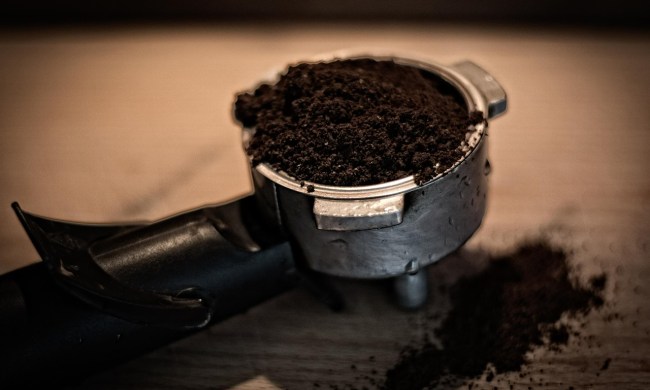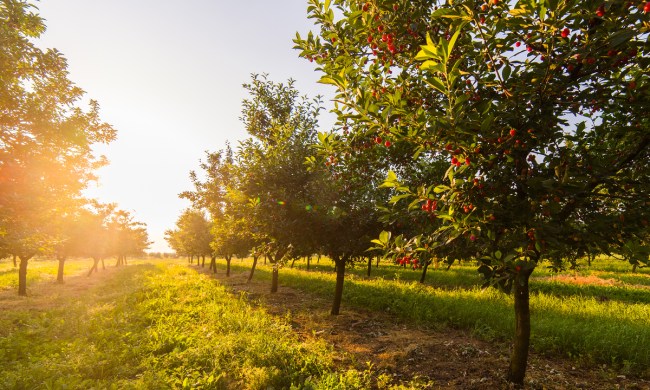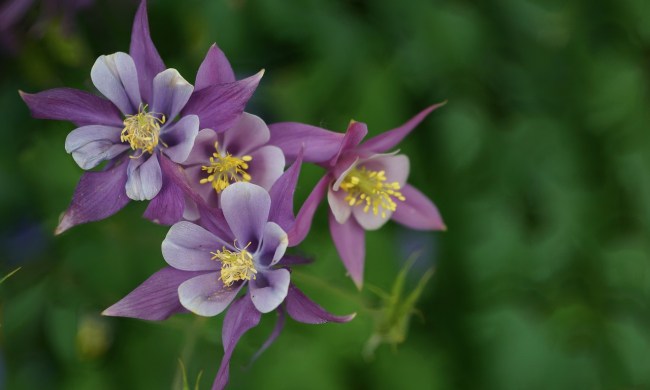Growing your own produce can be a rewarding hobby. It is fun, yields fresh vegetables, and saves you money on pricey produce in the grocery store. One particularly fun way to grow vegetables is in a hanging basket. There are many beautiful hanging vegetable garden ideas you can take inspiration from, and this is the perfect way to keep your delicious veggies off of the ground and away from pests. Not all vegetables flourish in hanging baskets, so check out some of the best types to grow in your floating garden.
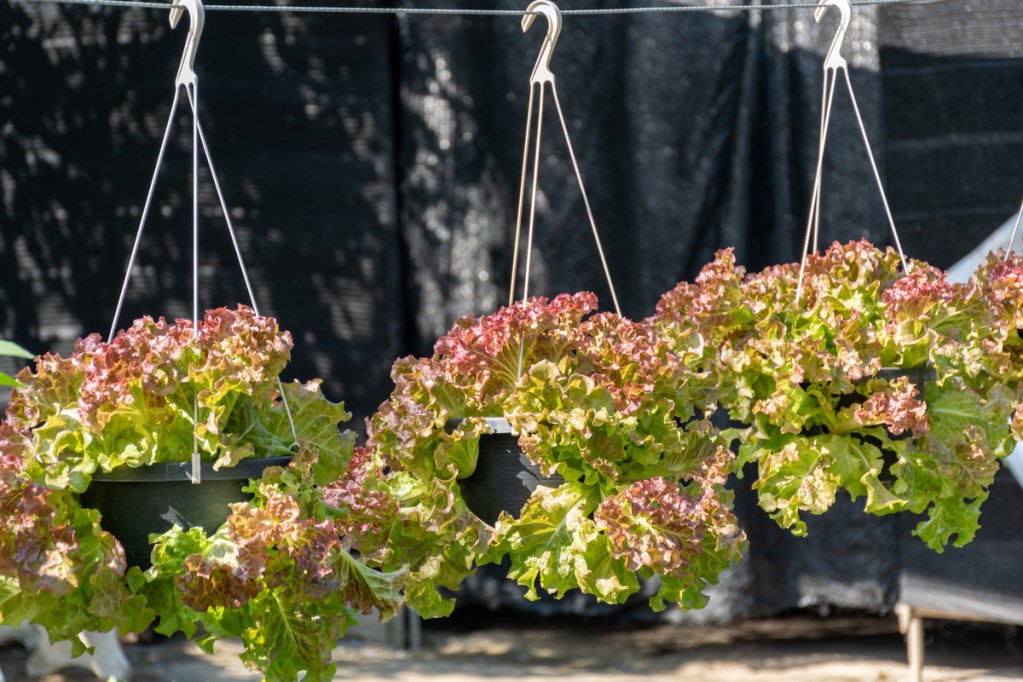
Top 5 vegetables to grow in hanging baskets
Picking the right vegetables for your hanging basket garden is the first step toward planting success. Hanging vegetable plants can truly flourish if they are built for the floating lifestyle. Some of the best vegetables you can grow in hanging baskets at home include the following.
Cherry tomatoes
If you have ever grown a cherry tomato plant before, then you know how wild the plant can get. Cherry tomatoes grow on long vines. These tomatoes are low-maintenance, making them great for hanging baskets. The long vines grow down and over the edges of the hanging basket for a natural look.
Lettuce
Growing your own lettuce can be great, especially if you love salads. There are a lot of benefits to growing your lettuce in hanging baskets, one being that you can keep it safe from slugs and other pests. Unlike cherry tomatoes, lettuce grows in a very compact form. There is no overhang, and the lettuce can grow nicely in the small space provided.
Peas
When a pea plant is fully grown, the thick and luscious green leaves can easily overtake the edges of a hanging basket. It almost looks like a ball of green leaves hanging from your front porch. Peas grow on long vines in bundles, making them perfect plants for hanging baskets. They are low-maintenance and easy to harvest. They also benefit from being off the ground and away from pests.
Pepper
Another great option for growing vegetables in hanging baskets is the pepper. Many types of peppers can thrive in hanging baskets. Hot chili peppers, bell peppers, cherry peppers, banana peppers, and jalapeno peppers are just a few you can grow in your hanging baskets. It is the perfect way to bring some heat and spice to your outdoor garden.
Cucumbers
When grown in hanging baskets, cucumbers tend to be straighter from hanging, more uniform, and less susceptible to pests. Harvesting your cucumbers is also a lot easier.
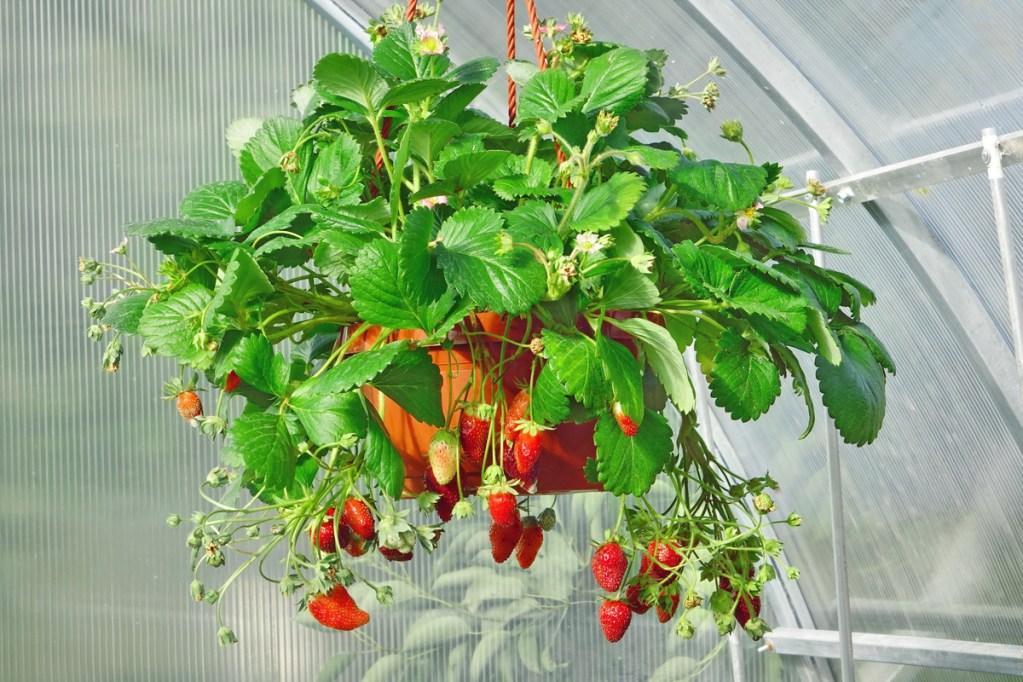
Where should you hang a vegetable basket
Once you figure out what delicious vegetables you want to grow, you have to figure out where to hang these veggie baskets. There are a lot of options for locations for your hanging vegetable baskets. Each one has different benefits, and it really just comes down to preference.
Front porch or back deck
The front porch or back deck is a great option for hanging up your baskets. Depending on which way your home is facing, it is important to consider sunlight. If your home is facing the sunrise (in the east), you may want to consider putting your vegetables that require less sun on the back porch. It all depends on the type of vegetable, the direction of the sun, and the sun tolerance of each plant.
Inside a sunroom
Sunrooms can provide your vegetables with all the light they need and the protection from pests. They can be a great way to keep your plants safe from the elements as they get good sunshine.
Kitchen by a window
A smaller-sized hanging basket can fit in the kitchen, but it needs to be right by the window. It is also important to consider that the dirt from hanging baskets may cause a bit of a mess in your kitchen sink area.
On a tree
If you don’t have handy hooks ready for hanging up your baskets, you can simply use a nearby tree. Hanging your basket on a tree can be beneficial because it provides good shade and enough sunlight.
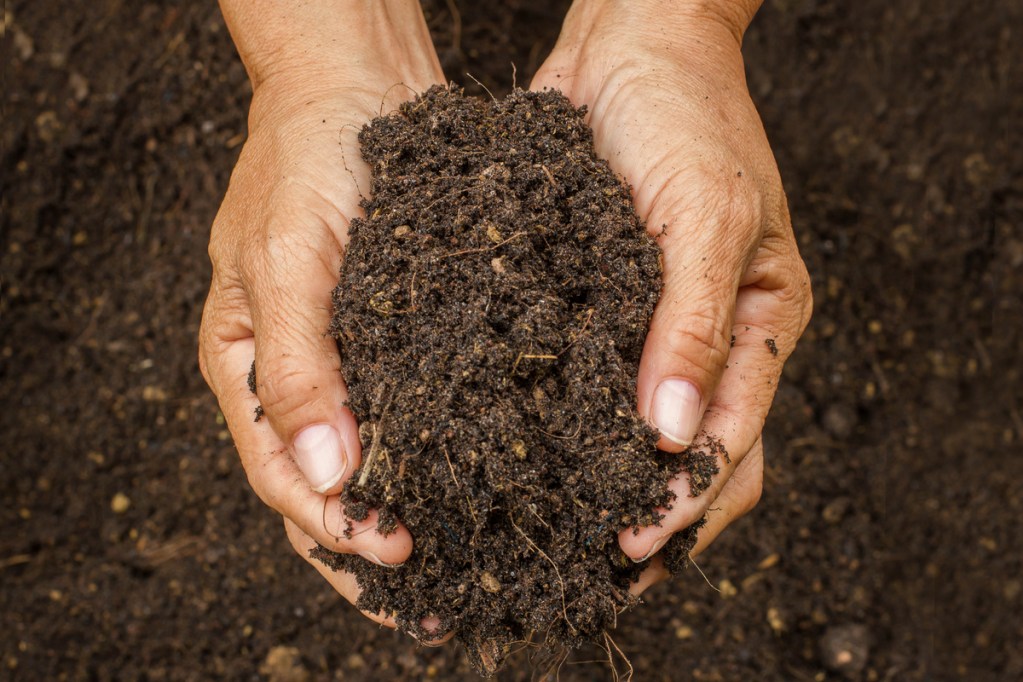
What soil is best for hanging vegetable baskets?
Soil is an important factor for a successful hanging basket. If you think about it, hanging baskets feature a lot of plants and root systems, but not very much soil. This is why the type of soil you use is so important. It can mean the difference between a bountiful harvest of veggies and a brown, dying plant.
Because of this, you need to choose a potting soil that has the following characteristics:
- Holds moisture well.
- Light, aerated, and breathable.
- Heavy enough to hold the roots.
Many potting soils can check these boxes, so it is also important to look for some key ingredients that come with store-bought soil:
- Peat moss
- Pine bark
- Perlite
- Vermiculite
Using some of these tips and tricks will have you on your way to a successful hanging vegetable basket. Hanging planters are great for bringing gardening to the sky and celebrating the beauty that nature has to offer. Utilize some of these hardy vegetables that not only survive but also thrive in a hanging basket environment. You will love how bountiful your harvest will be each and every season.
